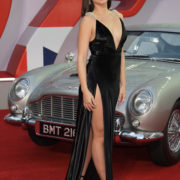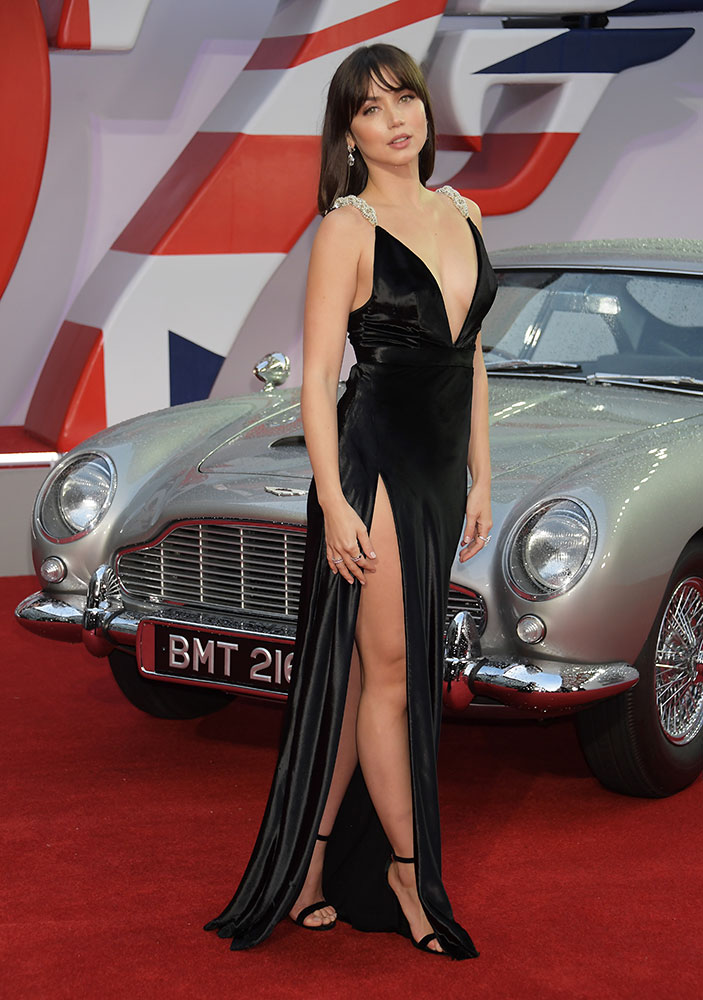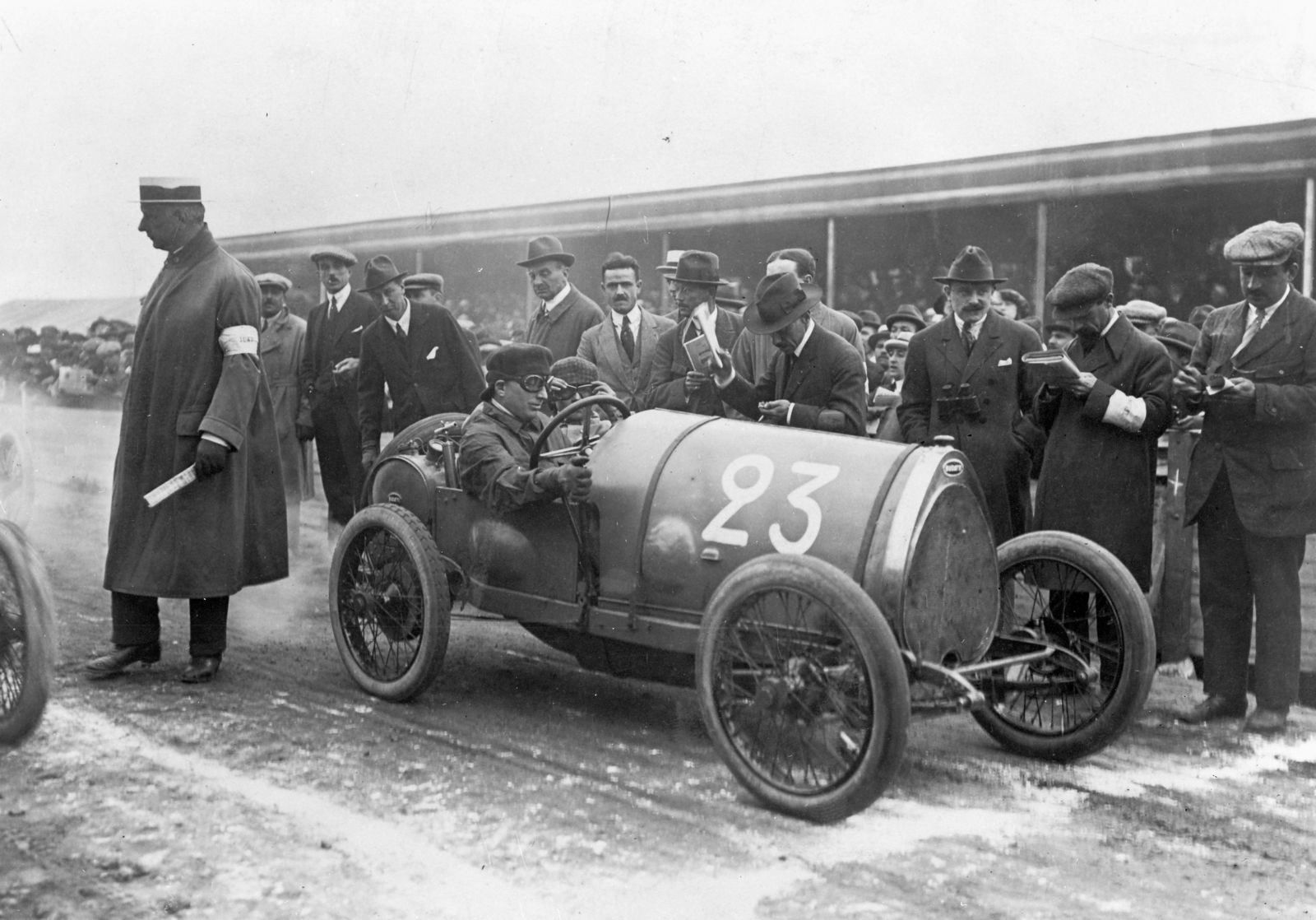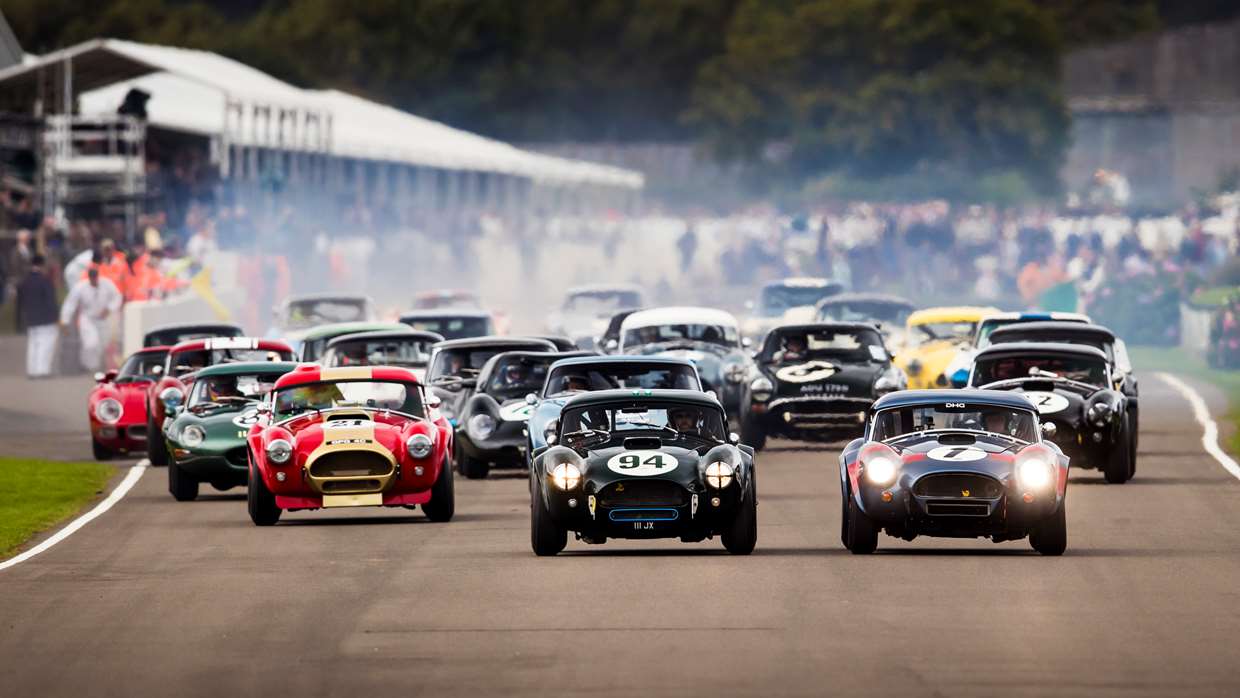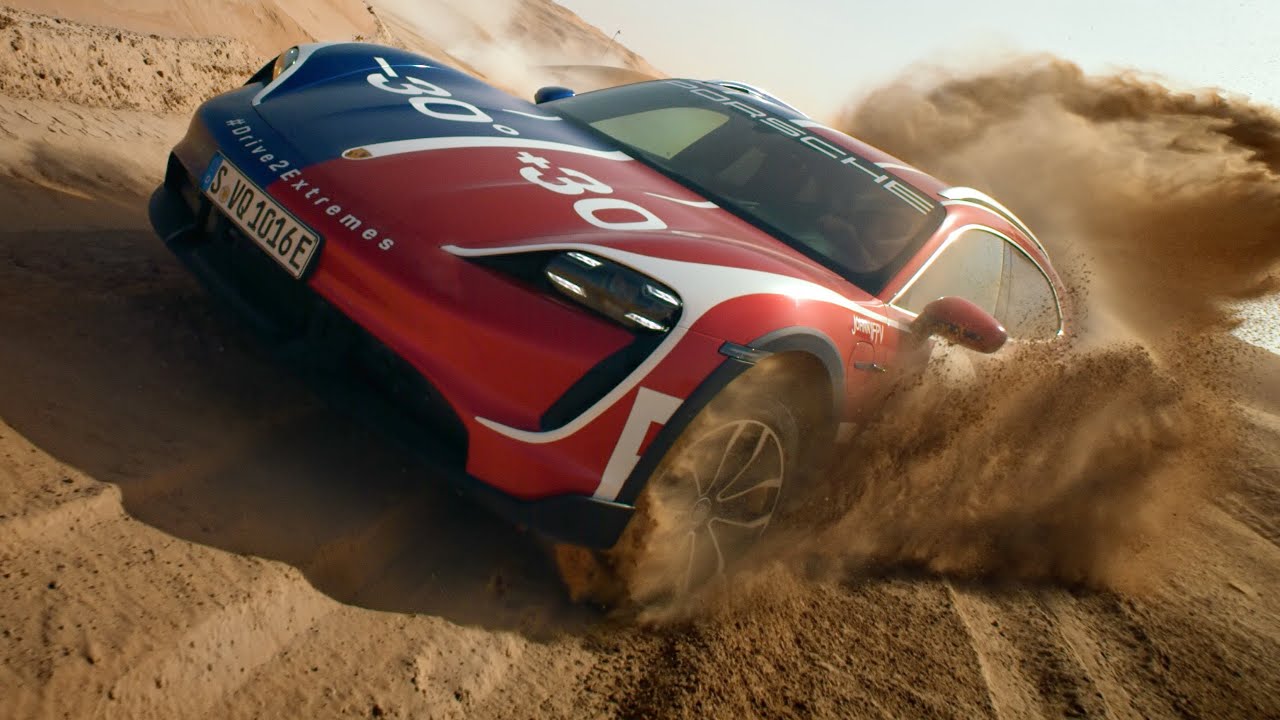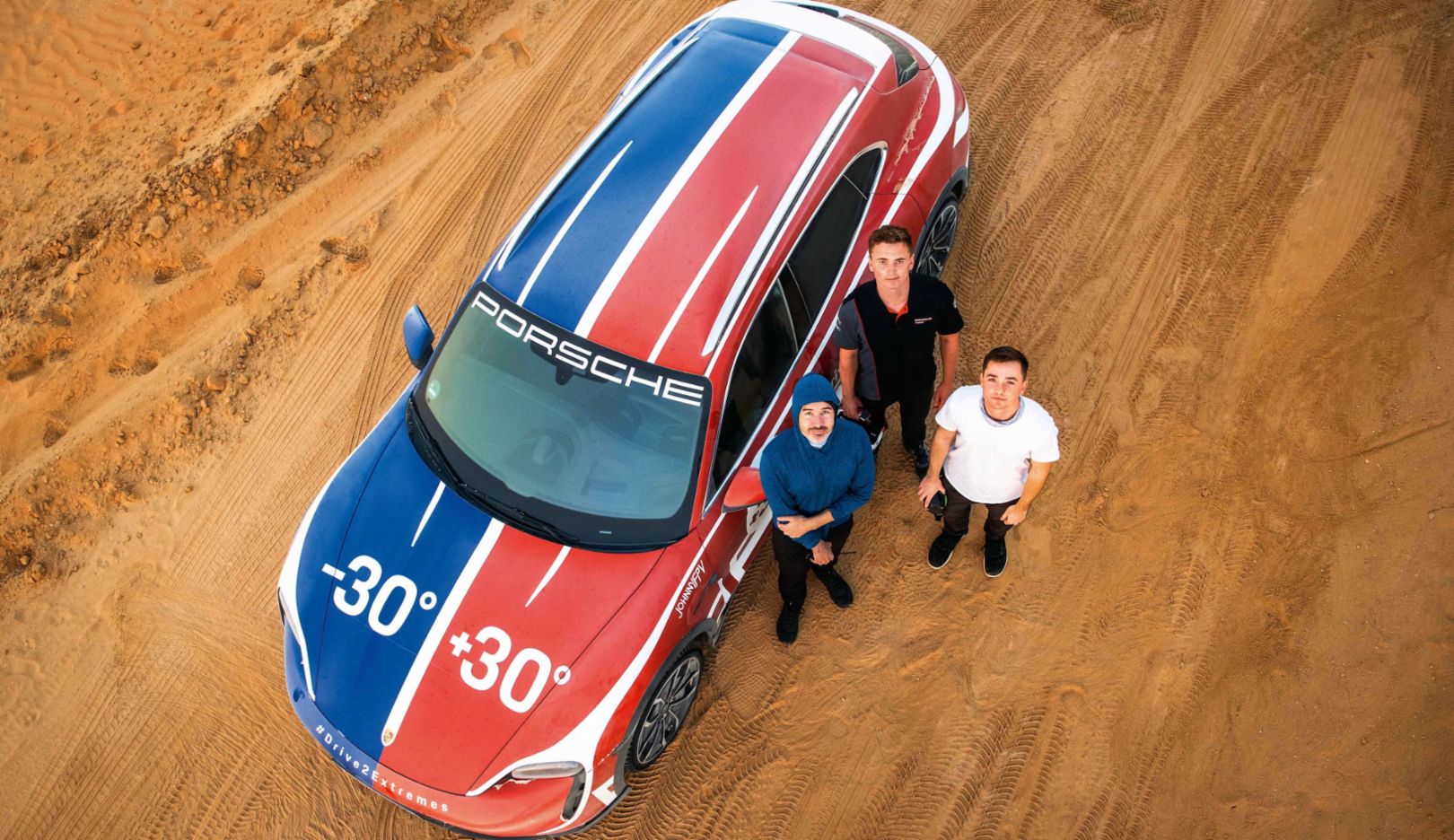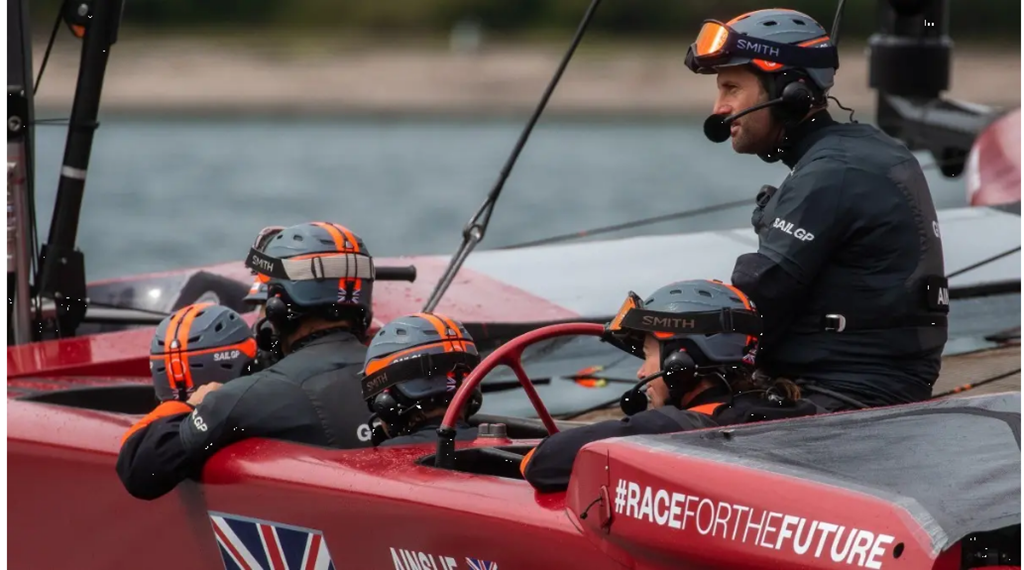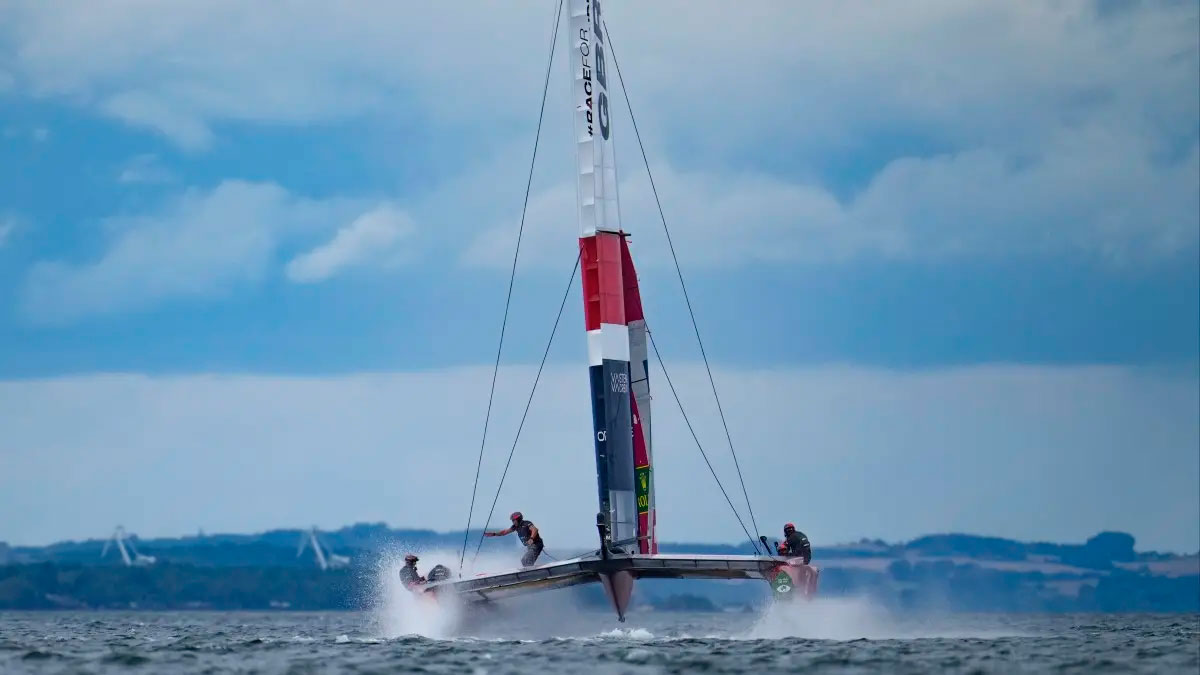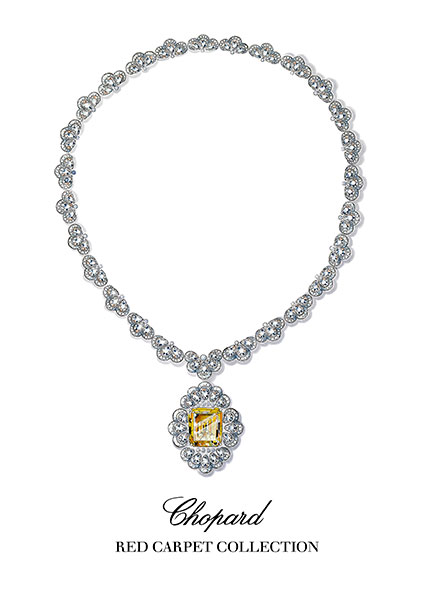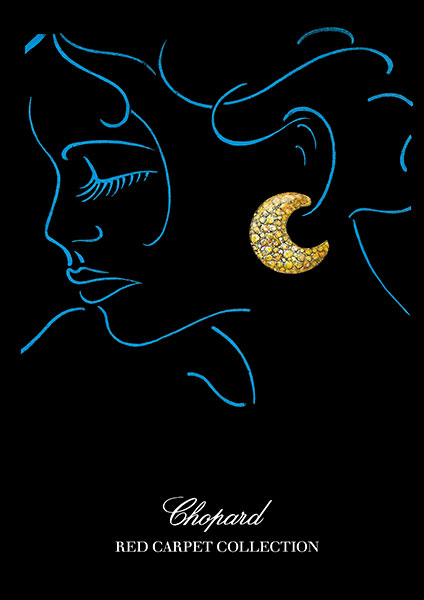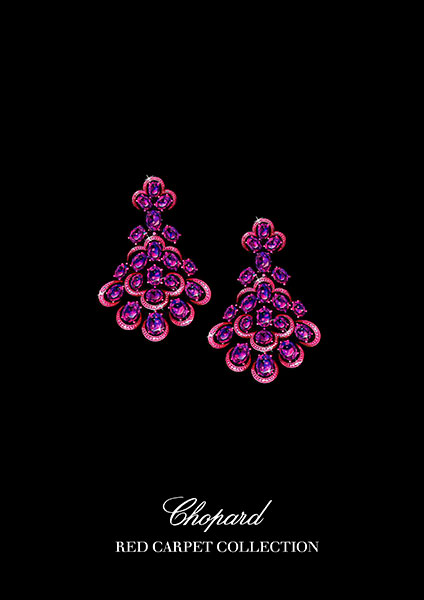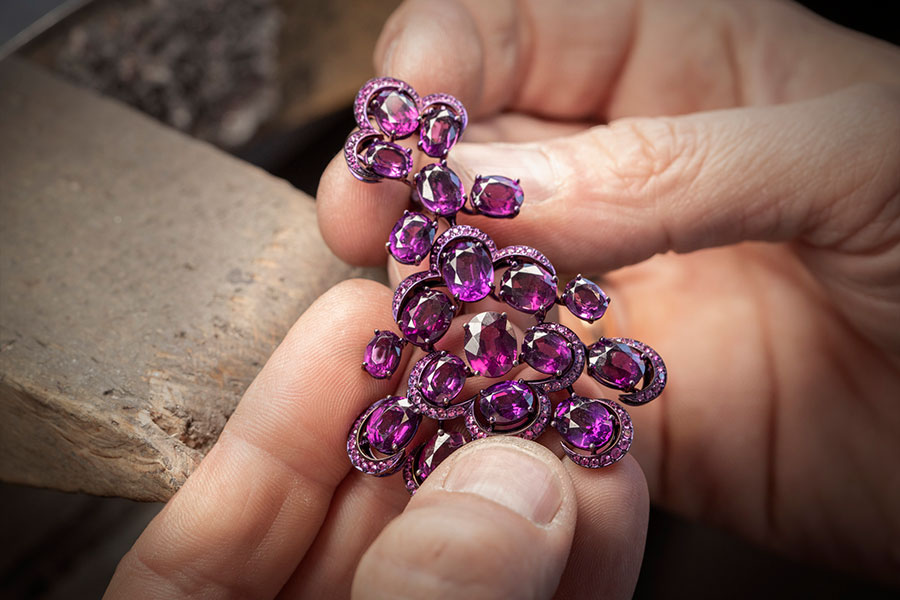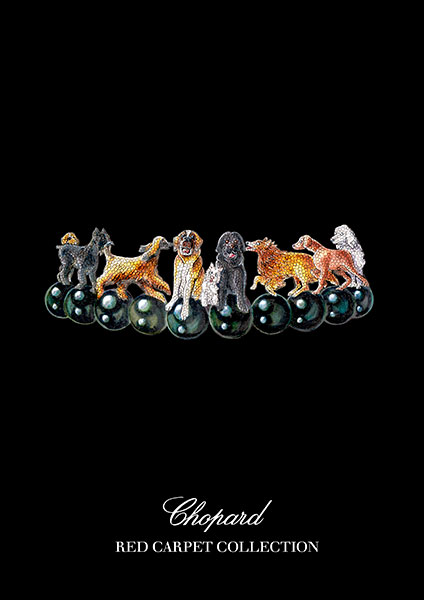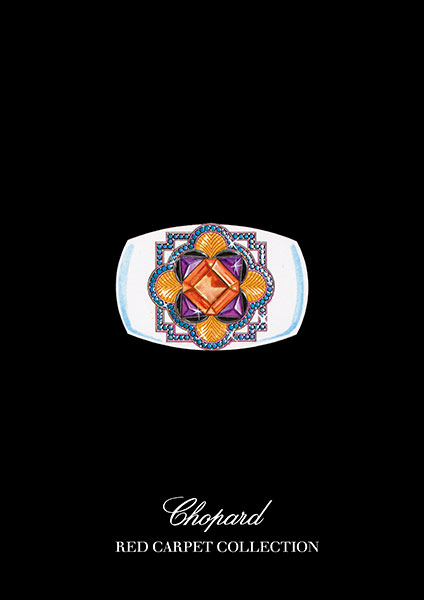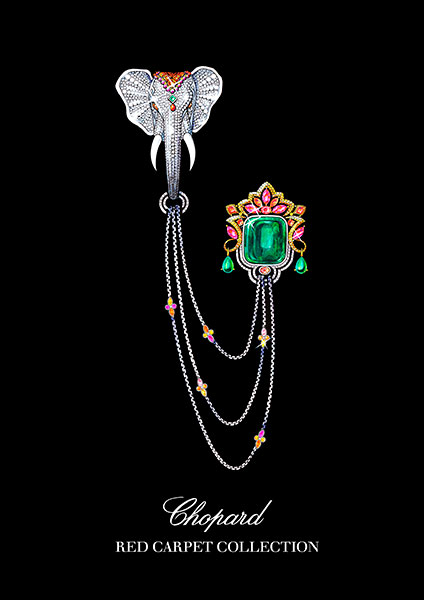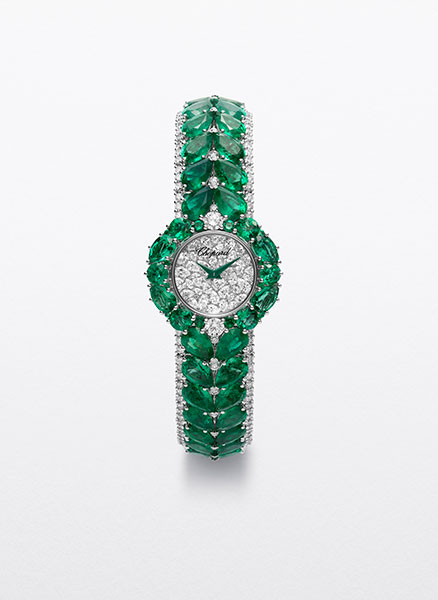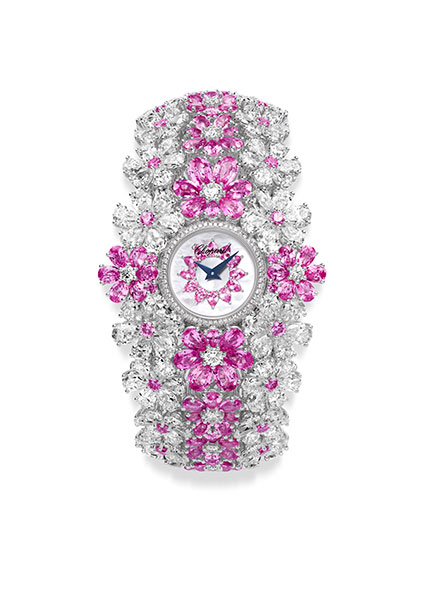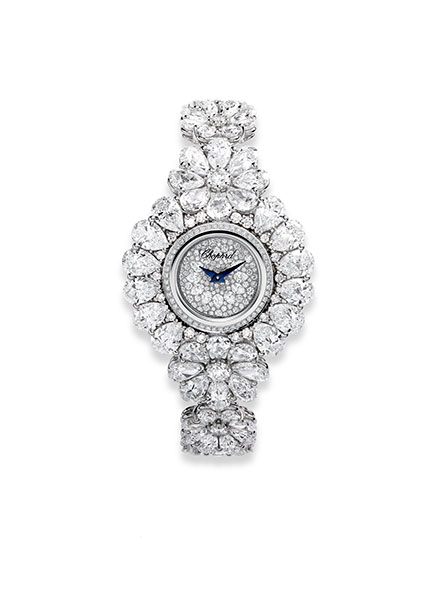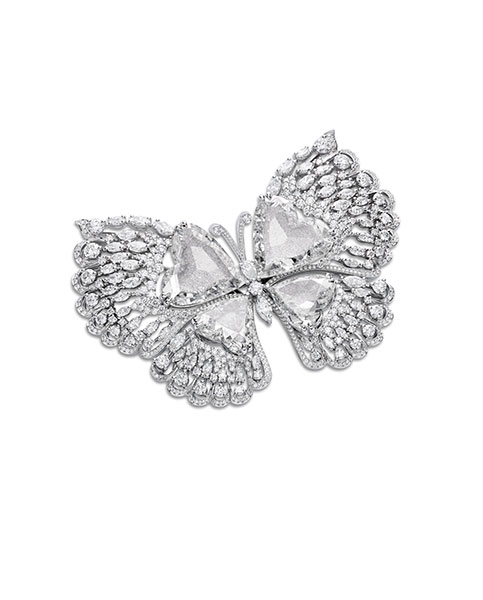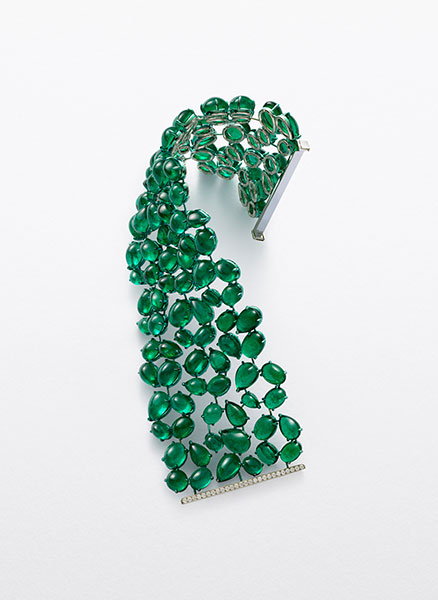HAPPY DIAMOND: CHOPARD’S ADN, JULIA ROBERTS INTERPRET THE JOIE DE VIVRE
They whirl, they waltz, they twirl, they appear to float as if weightless and almost make one forget the passing of time. There is nothing more mesmerising than the exquisite motion of the diamonds at the heart of Happy Diamonds watches and jewellery. Free to move at will, they seem to be vibrantly alive.
They perform free variations and dance as if they will do so forever. Diamonds make light of all prevailing rules and norms, including the law of gravity. Protected between two sapphire crystals, they spin according to the movements of the woman who wears the creations of the Maison on her arm, in the hollow of her neck or adorning her ears. A graceful double ballet generated by the wearer’s movements with which the diamonds keep step – or decide to follow their own path.
Invented by the Chopard workshops in the 1970s, the idea came out during a stroll in the Black Forest of Chopard decorator and designer Ronald Kurowski marvelled at the sight of a waterfall: the drops of water bursting from it reflecting the sunlight and shimmered like the colours of the rainbow. This vision sparked his brilliant idea of enabling diamonds to shine more brightly by freeing them from their retaining claw settings and enabling them to move about freely. But above all, so that they can whirl freely on the watch face, the dancing diamonds are set in a domed cylinder culet. When she caught sight of them, Karin Scheufele spontaneously exclaimed “these diamonds are happier because they are set free”, everybody was agreed that the sentence was very appropriated, and they called them “Happy Diamonds”.
Since the Happy Diamonds, the history of Chopard has been punctuated by iconic collections that have made their mark on the development of both watchmaking and jewellery, no doubt that the most important was the creation of the Happy Sport watch.
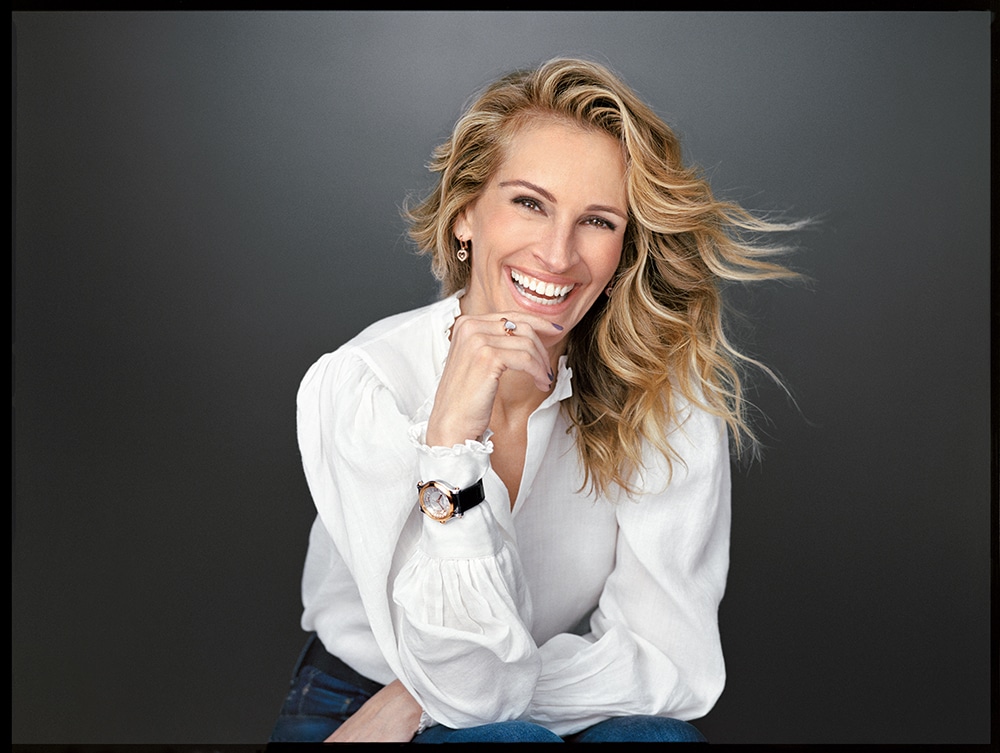
Happy Sport is the stroke of genius of a young woman driven by boundless daring and creativity. First introduced by Caroline Scheufele in 1993, it bears within it the countless transformations of an era and embodies Joie de Vivre and the free-spirited attitude to which contemporary women aspire.
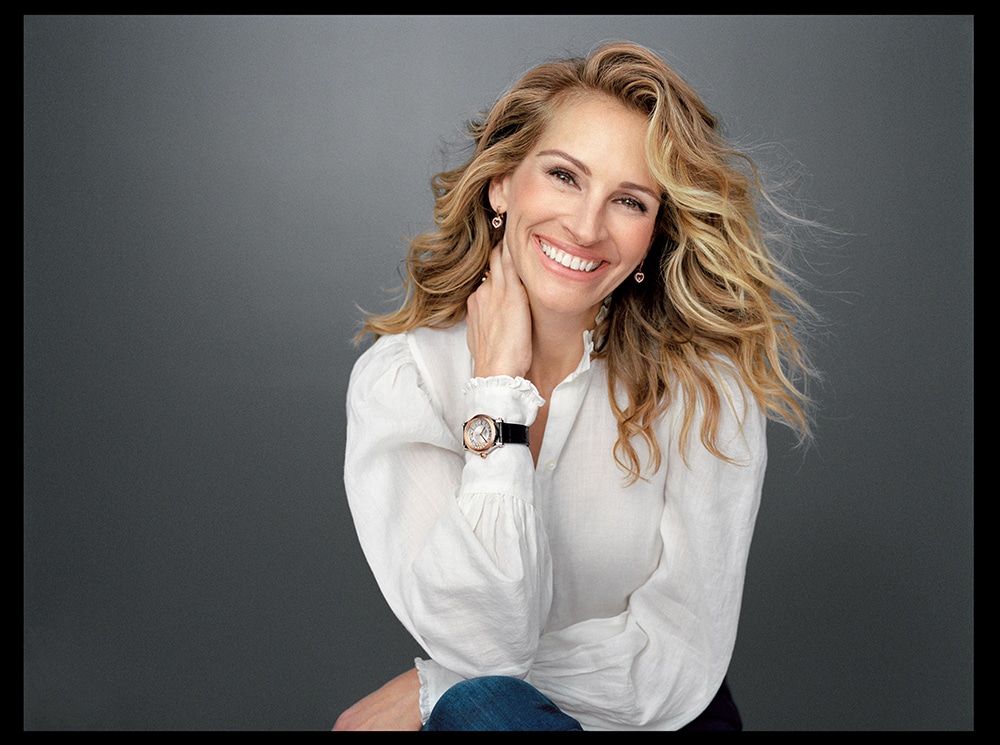
Having become a quintessential fashion and watchmaking icon, the Happy Sport collection has continued to stage the enchanting choreography of its dancing diamonds through a multitude of variations that have appealed to every generation, embodying a new way of contemplating time. A look back at this true watchmaking legend. As a young woman, she sparked Chopard’s first profound transformation by launching the family Maison into jewellery-making with her clown pendant design. Having entered the field of design through this masterstroke, Caroline Scheufele – now serving as Co-President and Artistic Director – was driven from the early 1990s by the idea of a versatile watch whose precious, casual appearance would make it equally easy to wear on a tennis court, at a business lunch or for an evening out on the town.

She picked up the concept of dancing diamonds, she decided to place them between two sapphire crystals above the dial. One of her workshop foremen told her it was impossible, before nonetheless promising: “Caroline! If you manage to sell these watches, I’ll give you one rose for each of them.” That only further strengthened the determination of the woman who has always considered that “no” is not an answer. She busied herself with transforming this idea into a viable project. The result presented in 1993 was a real surprise.
For the first time in watchmaking history, here was a watch mingling steel and diamonds, fitted with a soft, comfortable pebble-link bracelet, set with cabochon-cut sapphires on the lugs and on the crown echoing the understated blued hands; and finally, featuring a white dial enhanced by seven diamonds caught up in an animated dance recalling the whirlwind of life itself. The aptly named Happy Sport became a new casual chic fashion icon, acclaimed by the press and in strong demand in the markets. Over the years, Happy Sport has generated a magnificent array of interpretations equalled by very few other watches. This abundance has enabled the collection to become the first collector’s item ladies’ watch. Today, for the first time, the Happy Sport watch is appearing in an optimally comfortable 33 mm-diameter case inspired by the ‘golden ratio’ principles of aesthetic harmony. Seven new references are joining the collection in a rich variety of models: four two-tone featuring a Lucent Steel A223 case embellished with ethical 18-carat rose gold, and three entirely crafted from ethical 18-carat rose gold, available on a leather strap or metal bracelet. An eighth version in ethical 18-carat white gold is entirely set with diamonds. All of them beat to the rhythm of the Chopard Manufacture 09.01-C movement with automatic winding and each dial is graced with the legendary dancing diamonds.
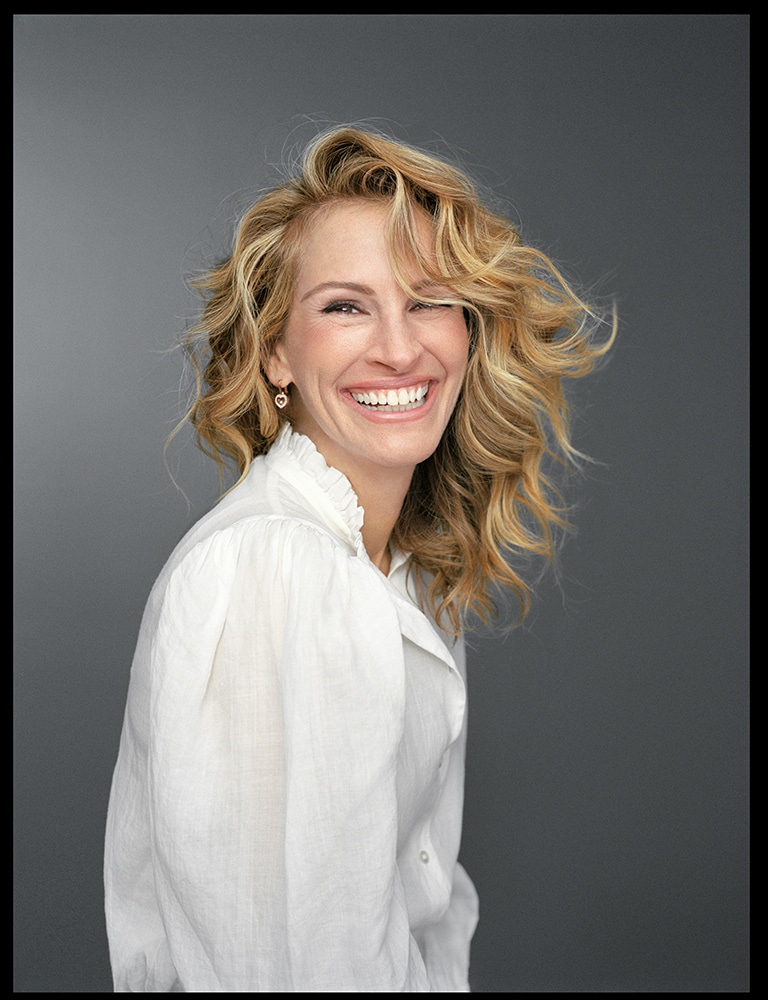
And to pay homage to the first Happy Sport Watch, Chopard, now presents Happy Sport the First, adding major innovations: a new case in Lucent Steel A223 redesigned in a 33 mm diameter inspired by the principles of the golden ratio, as well as the Manufacture Chopard 09.01-C movement with automatic winding.
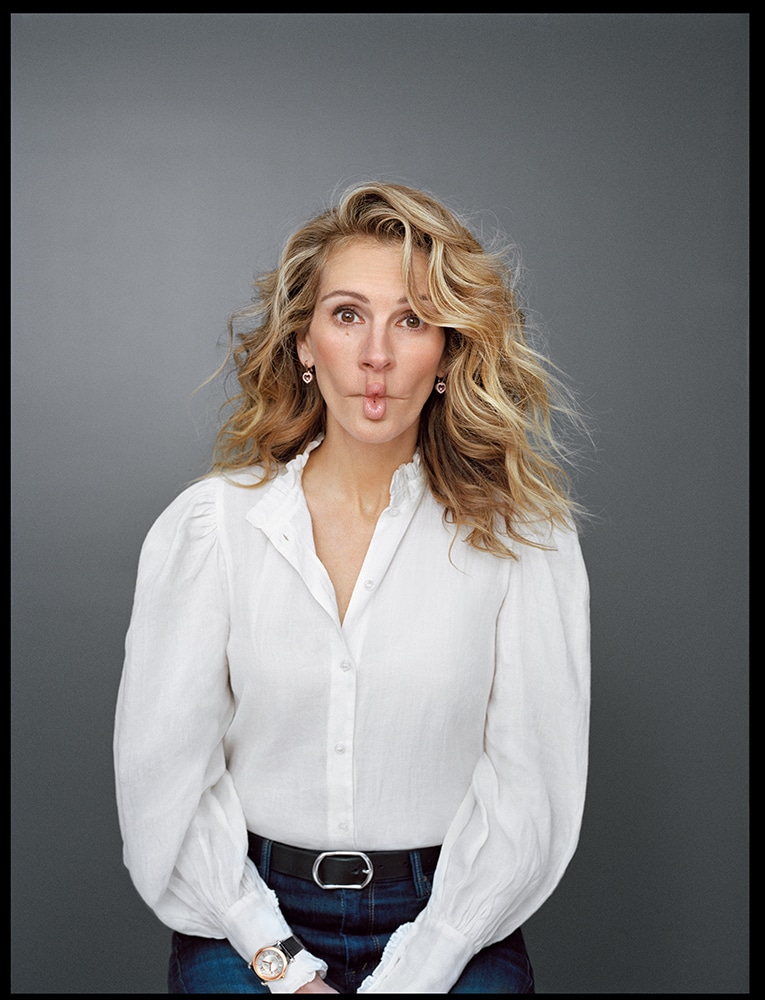
For the launch of the new Happy Diamonds film starring Julia Roberts and directed by Xavier Dolan, we talked in an exclusive interview with Caroline Scheufele, Chopard Co-President and Artistic Director she gives an intimate perspective on the things that inspire her and her commitment to Chopard’s creative edge.
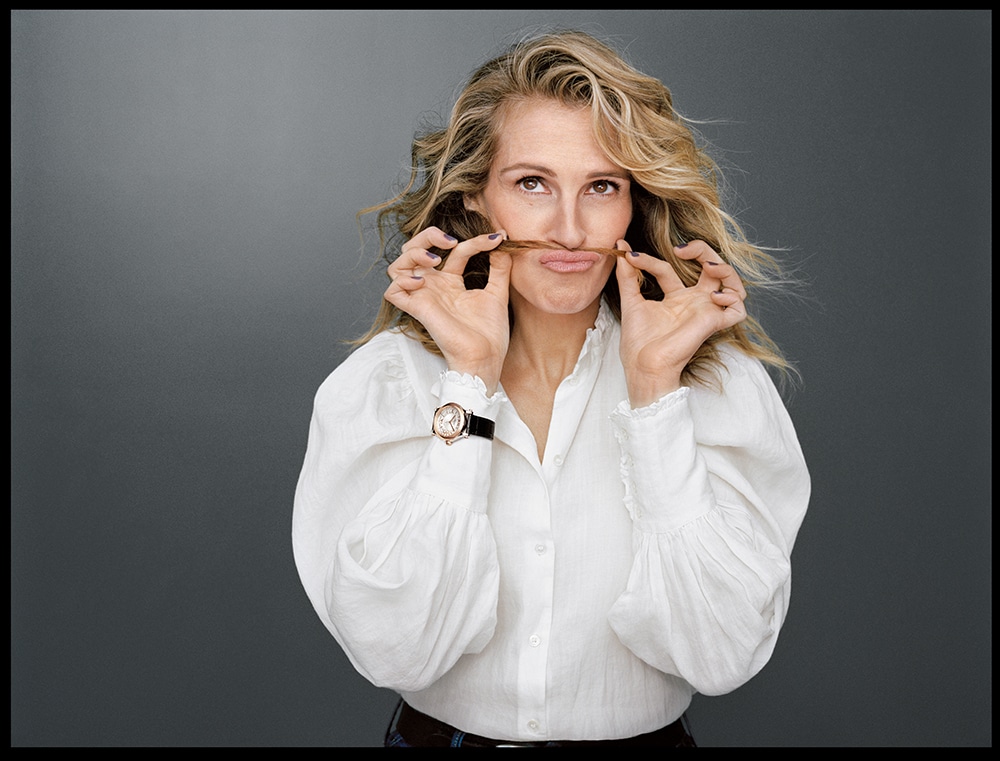
As a little girl, you made your first watch from aluminium foil as a present for your parents. How did they introduce you to the creative process?
The first thing my father taught me to do, before I learned the alphabet, was to read the time on a Mickey Mouse watch he brought me from America. This was my first contact with watches, so I looked for anything I could find – paper, aluminium and anything else – to make my own timepiece. The only mistake I made was that I got confused with my piano lessons and wrote Chopin on the dial instead of Chopard!
Chopard is one of the rare family Maisons in the watchmaking world and you are regularly seen with your family at major events. How does your family contribute to making you the woman you are?
One of the things I love most about Asia is that families are very close, with traditions such as having Sunday lunches together or the kids tending to spend time at home. Our family is very similar. In addition to living near each other we work very closely together and I have shared an office with my brother since forever. Chopard is a family-owned and independent Maison. This is one of our main strengths and a great blessing in many ways. We don’t always agree on things, but we like to make decisions together and work as a team with regard to business development, global strategy, production, distribution, new designs, and new products. We hope we will always be able to continue working this way.
How do you think one becomes a creator? Both you and your brother took drawing lessons during your childhood from a teacher who had a great influence on your training. How important was this to your creative process?
We are a very creative family. My brother draws and paints very well. I think our lessons were really the door that opened the way to what we are doing at Chopard today both in terms of what he does in the masculine environment and what I do with regard to jewellery and the ladies’ side of things. My brother is also very passionate about the mechanics of watches and complicated movements however and particularly excels when it comes to his other Maison, La Chronométrie Ferdinand Berthoud. It is there that he can truly express himself.
Even today, you never leave home without a sketchbook. As an artistic director, do you think that the need to express your ideas through design is inherent to the nature of creators or do you think that it is a talent that you have to work on?
I think it is a bit of both. On the one hand, being creative never stops and on the other, creators are always searching for something new. One cannot simply push a button and be creative. It is an ongoing process – often in the back of one’s mind. Due to that, I always have my sketchbook at hand, including next to my bed at night, because I might dream of something and not remember the next morning. I may just write down a word so that I remember what happened during the night in the morning. One might have an idea at any moment of the day, even during a dinner – I sometimes even sketch on napkins! To create is a wonderful thing but it’s also a responsibility as one always has to come up with something new.
In 1985, you created your first jewel for Chopard: the Happy Clown. Initially intended to be a one-of-a-kind creation, it soon became a success that marked the beginning of jewellery-making at Chopard. Did you have any idea of this little clown’s potential when you made this sketch?
Never! I was still at school when I designed that little clown. As a child, I loved to go to the circus. And apart from the acrobats and all the animation, my favourite act was the clowns, because although they’re sad, they make people laugh. As a result, I designed the little clown with diamonds in his tummy. And as a surprise, when my father saw the design, he produced it for me for Christmas. I thought it was a unique piece, but a bit later I went to the workshop and saw lots of them. That was the beginning of jewellery at Chopard.
The idea of dancing diamonds came from the vision of a waterfall and droplets gleaming under the sun’s rays. Can you tell us more about them?
Actually, the Happy Diamonds concept has existed for much longer than I have been involved in the Maison, but I’ve always been fascinated by seeing these little diamonds spin around and actually talk about dancing from their place within the pieces of jewellery or the watches.
My mum invented the name Happy Diamonds. When she saw the first prototype in our workshops, she said: “Diamonds are happier when they are free”. Just as a person who is free is happy. Everybody agreed that her comment was very accurate, and it became the name of the entire collection.
In the 1990s, you decided to create a new watch with dancing diamonds: the Happy Sport. When you presented the project, is it true that a workshop manager originally didn’t believe in it very much?
Actually, not just the workshop manager, but the whole watch development team, along with my parents… They thought it was a crazy idea to put diamonds in a steel case when diamonds are normally hosted in white gold or in platinum. But there was nothing to prevent it. Steel isn’t a precious metal but it’s cool, young, and fun and you can wear it around the clock. It was a big battle, however. And when it came to producing it, it was another challenge because everybody thought I had definitely gone mad. But I’m a very persistent person who doesn’t take no for an answer. The more I hear no, the more determined I am. Anyway, it did happen, and the results are clearly visible. I remember the workshop manager saying that for every watch sold, he would give me a rose. I ought to have a rose plantation by now!
Did he keep his promise?
As we had this little bet, at the end of the day, he kept his promise. One Sunday morning, I received a beautiful rose tree for my garden!
What were the Happy Sport’s technical challenges?
Originally, in the classical Happy Diamonds watches, the dancing diamonds were just allowed to spin around the dial. In the Happy Sport, they’re totally free, because they’re floating over the watch. This was a technical challenge because we had to find the aesthetic balance between the case, the dial, the first sapphire crystal, the position of the dancing diamonds and the next sapphire crystal, which made it quite complicated. Then, of course, the watch had to be waterproof. That was another technical challenge.
For me, when you say Happy, it says it all. The diamonds inside are actually truly free. They’re not stuck in a setting where they can’t move. And when you see them dancing, you realize it was worth the challenges!
Like Yves Saint Laurent, whose invention of luxury ready-to-wear enabled women to dress in designer clothes on a daily basis, your introduction of the Happy Sport took the mystique out of jewellery watches, meaning women could wear them 24/7. You invented the watch of the free-spirited 1990s woman. What does being a free-spirited woman mean today?
When I invented the Happy Sport, it was most of all because I was doing a lot of sport myself. That’s why the word “sport” is in there. At Chopard, we had a few summer watches, which were cool sporty pieces. But I really wanted something with a bit of sparkle that you could wear around the clock, suitable for going swimming, water-skiing, playing tennis, shopping, taking the kids to school, going to the office or going to a cocktail party. So if there was no time to change, you would already be somewhat dressed up with little diamonds dancing on your wrist. For me, that was what being a free spirit was all about, because today’s women are all active, whether it’s taking care of several kids or doing charitable work or travelling or working… And this watch is just perfect for all of it.
Women no longer simply look at the time, they take the time to contemplate the choreography of the diamonds. Were you aware that you would revolutionized our relationship with time this much?
I wasn’t really thinking of shaking up the watchmaking industry, I was just doing my job, which is also my passion, namely creating and designing. Maybe I did come up with something very unusual and unexpected, which is often the case with the best creations. But I had no idea that we would come that far with this watch.
How do you explain that the Happy Sport is still as contemporary today as it was when it was created in 1993? When young women come to your boutiques asking for the same Happy Sport that their mothers and grandmothers wore, what do you feel?
It’s a watch that somehow really crosses generations. I think this is how icons are born, when something is passed on from grandmother to mother to daughter. I had no idea when I first designed it that this would be the case.
How do you wear your own Happy Sport or think it should be styled?
I would mix and mismatch it. You could wear it alone, or with beautiful Happy Hearts bangles, or with some beautiful diamond bracelets that would also go well with it to dress it up. I also wear the iconic clown pendant with it, so it definitely lends itself to being dressed up or down. That is the beauty of the Happy Sport. You can easily pair the steel version with a diamond ring. There is no “no go”.
Since 2015, Happy Hearts has also become a jewellery icon. How did this idea come up?
It was during a very boring meeting! When I get bored, I start designing, so I doodled around. We already had these long chains with simple empty hearts, which I also design. And I thought about giving them some colour and started colouring the hearts. One often doesn’t see things that are glaringly obvious as was the case in this instance. Subsequently, the trend was for young girls and women to wear lots of chains and good luck charms and bangles. As a result, we came up with the bangle, which is beautiful as well as being lovely to wear because it’s very soft and easy to put on and take off.
You chose Julia Roberts to embody the Happy collections. Was she an obvious choice? Why this particular actress?
When we first talked about launching a Happy Diamonds film, the team said it would be nice to have an ambassador with an incredible smile. So I immediately suggested Julia Roberts! I said that to my mind she has the most radiant smile on the planet! Who doesn’t like Pretty Woman? Who wouldn’t want to be Pretty Woman? She is one of my all-time favourite actresses. She has made great movies including Erin Brockovich. She’s the kind of actress that shines from the inside out. She’s a happy person. She has this sunny energy fostering hope that everything will be reborn even more beautiful than before, as well as amazing magnetism and inextinguishable Joie de Vivre. Julia Roberts was the only person I felt could convey the free-spirited charisma of Happy Diamonds and that is exactly how I wanted the Happy Sport watch portrayed.
How did you come up with the idea of entrusting the film to Xavier Dolan? How did you meet him?
He is one of the darlings of the Cannes Film Festival, where I met him. As one of my favourite directors, I immediately thought I should ask him to collaborate on our project so he could capture the emotions I wanted to convey thanks to his sharp attention to detail, which is what makes the intensity of his movies. He was instantly enchanted with the idea of working with Chopard and Julia Roberts and has turned out to be a very good choice.
This brings us to your historical partnership with the Cannes Film Festival that reflects your love for cinema. When did this passion strike you? Tell us the story of your collaboration.
I have loved going to the cinema ever since I as a little girl, and I still do. The beauty of movies, whether they’re romantic, scary or educational is that they take you into another world completely for two hours. I think that’s what initially led me to Cannes. I had always followed the festival from afar, however, and one day I suggested opening a boutique during the festival because of all the celebrities in town. I went to Paris to investigate the possibilities and met Pierre Viot, then president of the Festival. He was charming and he invited me to redesign the Palme d’or, for the 50th anniversary. I left Paris that afternoon with the old version Palme under my arm and stormed into my brother’s office in Geneva and told him I was going to redesign the Palme d’or. He looked at me as if I were completely mad but that was how it all began. Twenty-four years after the new Palme d’Or was unveiled in its current form, the love story continues. Since 2014, as part of our Journey to Sustainable Luxury, the trophy is made of Fairmined gold. We also created the Chopard Trophy in 2001, in order to reward young acting talents. Chopard belongs to Cannes and a bit of Cannes belongs to Chopard.
As one of these free-spirited women, you were at the origin of the Journey To Sustainable Luxury initiated in 2013 by Chopard. Today, sustainability is at the heart of the concerns of all the major maisons. Tell us how you came up with this visionary idea?
In 2012 at the Oscars, Livia Firth asked where our gold comes from. My immediate reply was “from the bank” but that wasn’t really the expected answer. There are millions of men and women digging up gold, often working in unsafe conditions and unfairly compensated for their work, or not at all. From that moment onwards, I was determined to embark on a mission to change not only Chopard as a company but also the entire industry. Sustainability is a Journey which never ends. And today, more than ever, our priority has to be to protect the people on the ground who make our business possible. Once we became aware of the situation, there was no going back. All of us at Chopard are convinced of the importance of putting ethical issues at the heart of our concerns. The sourcing of responsibly mined gold for our watch and jewellery production was one of the biggest milestones on our Journey to Sustainable Luxury.
People who know you say that your optimism and positivity are contagious. What are your tips for happiness?
First of all, I think you have to be happy in yourself. Otherwise, you can’t make others happy. It doesn’t cost much to smile. I always see the glass half full, not half empty, and I think waking up in a good mood, going to work in a good mood, and sharing your good mood with your team is essential.
What is your favourite motto?
Be happy!
And dance with your Happy Diamonds, of course.
Happy Talk
with Julia Roberts
- Something that makes you happy instantly?
The sunrise. Instantly is very specific…
- A movie that makes you happy?
The Philadelphia Story is a movie that makes me happy, to think about or to watch.
- Your happiness tips?
-1- be kind to others;
-2 -surround yourself with loving, kind, compassionate people;
-3- kissing, followed by dancing as a close second.
- Your favourite qualities in a woman?
Depth, soulfulness and just a real personal strength.
- Your greatest extravagance?
Travel.
- What makes you laugh?
Cleverness; not so much things that are funny, but things that are clever: a thoughtful thread to humour.
- What do dancing diamonds evoke to you?
Perhaps the idea that something is going to happen!
- How does your Happy Sport watch make you feel?
There is something about having a watch and every time you look at it seeing all these sparkling diamonds whirling around; it’s pretty awesome and truly good stuff.
- What does being a free-spirited woman mean today?
Being comfortable in your convictions and sharing your convictions with those around you. Not all women have those liberties and I am very grateful that I have them.
- How important to you is responsible luxury?
I would say that the idea of responsible luxury is something that not enough brands pay attention to. The thing with a Maison like Chopard is that it has really pioneered the idea of having a conscience, leading the charge and setting an example for other brands to follow.
- What is so special about Chopard?
Chopard just represents this timeless idea of elegance and sparkle and being ladylike. You kind of think: “When I grow up I want to be having a great time and wearing watches and earrings by Chopard”… and now look at me, I’m all grown up!
- Your favourite motto?
The motto that I repeat the most is “no way out but through”.
- What’s your present state of mind?
I am really happy right now; it’s been such a beautiful day and I have felt such a really great sense of kinship that I had not expected today, so I’m superhappy.


















